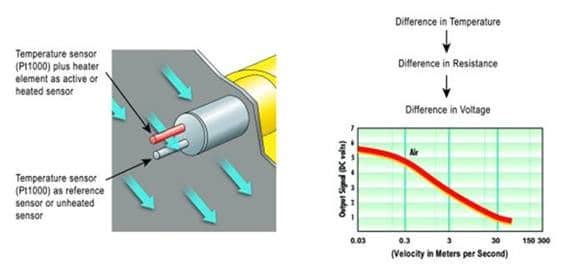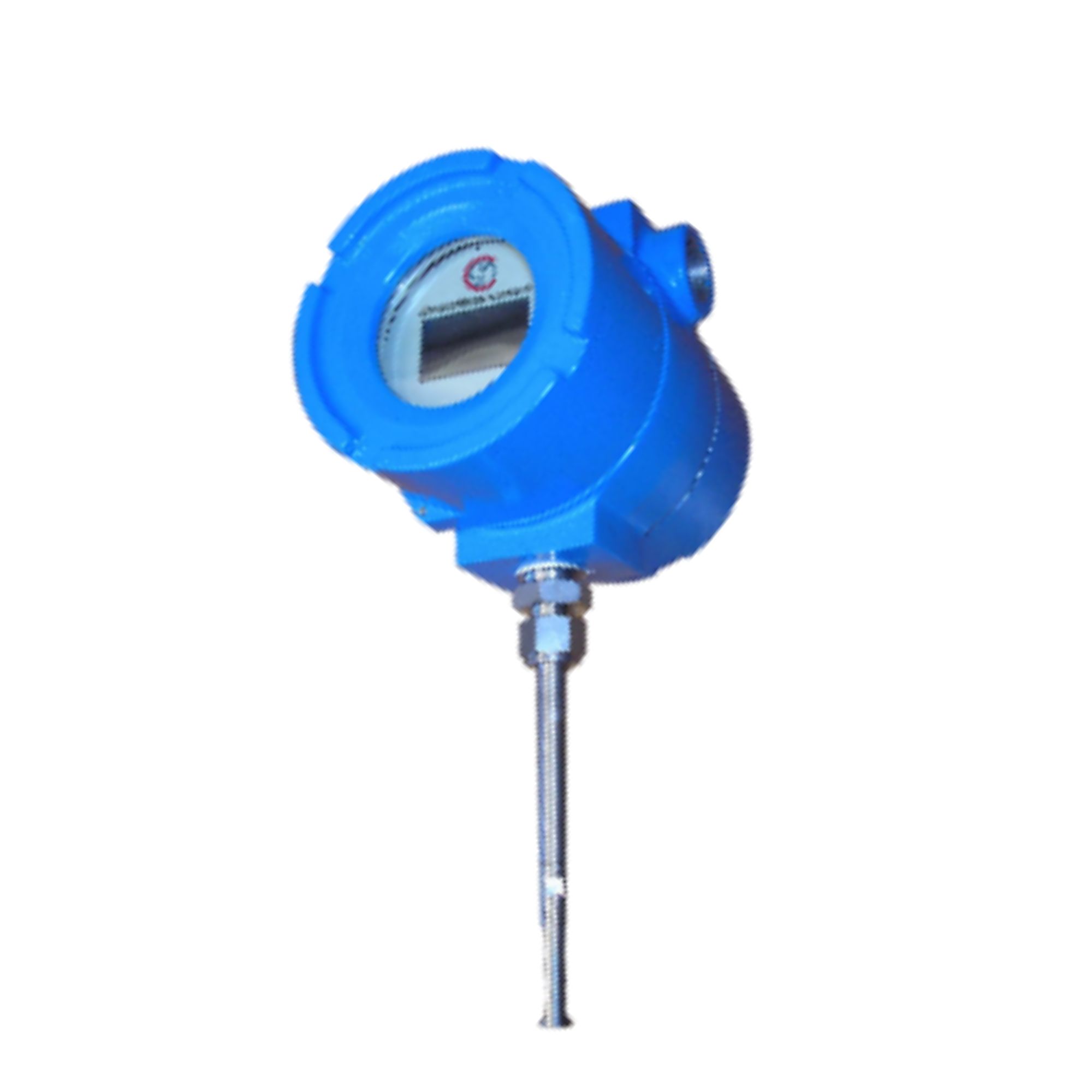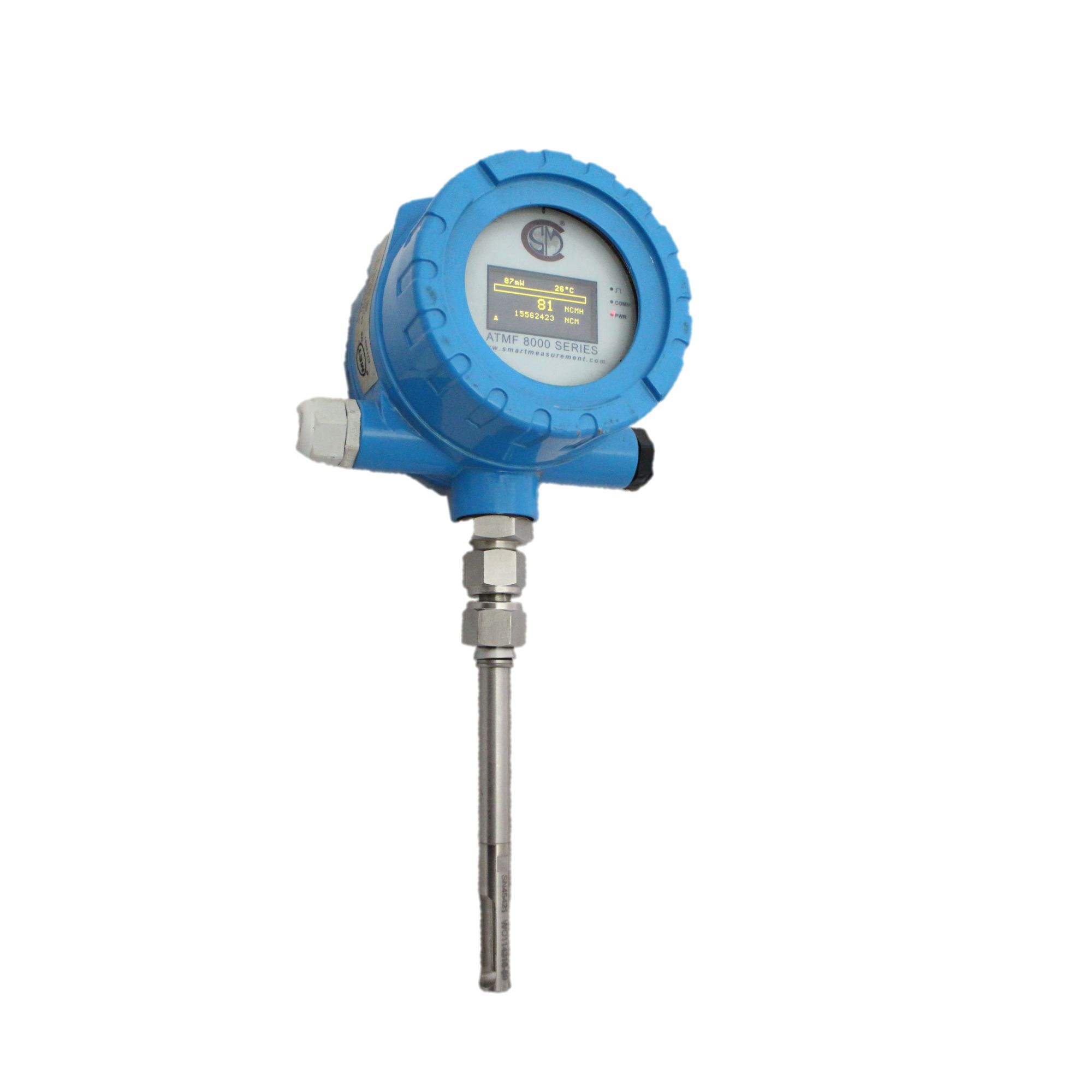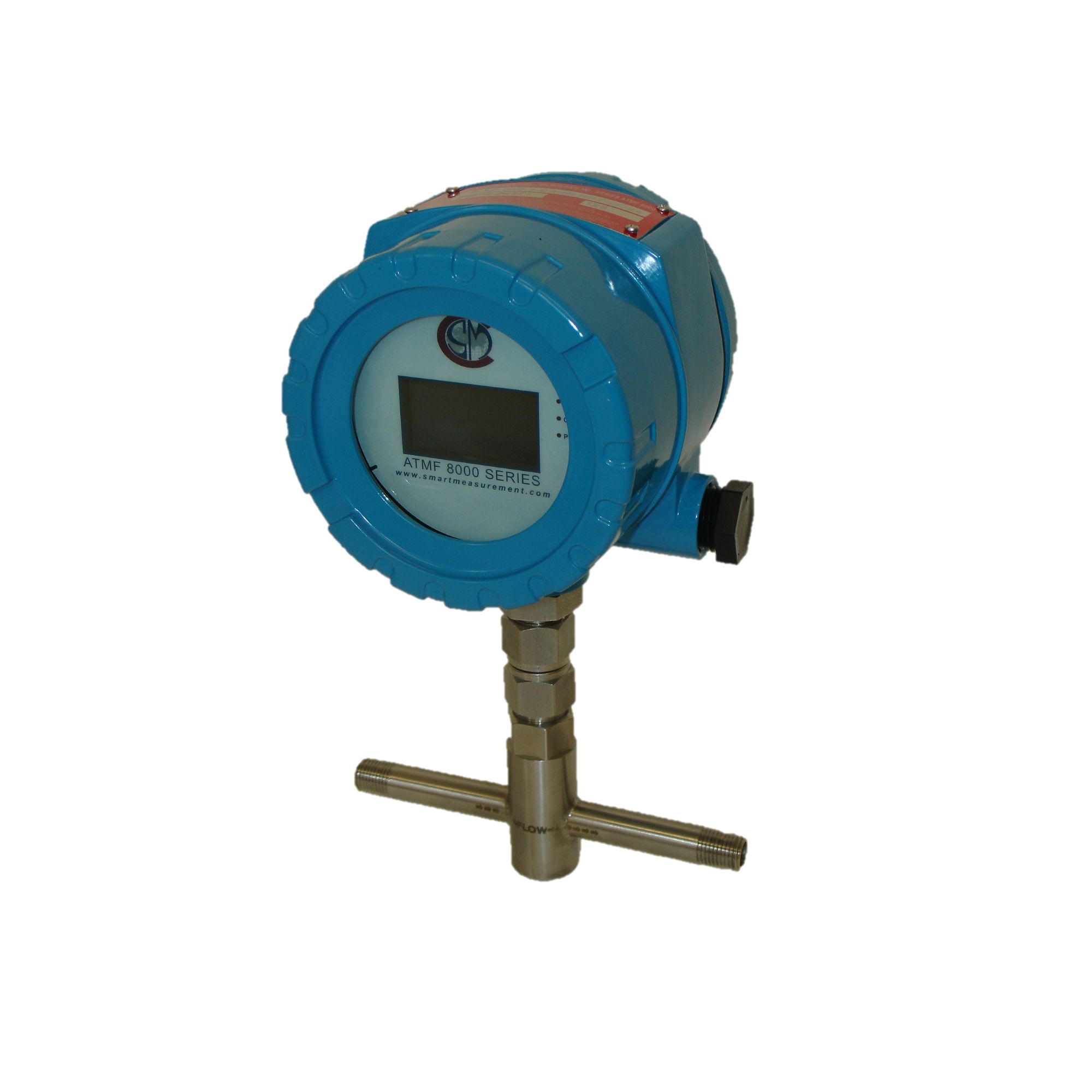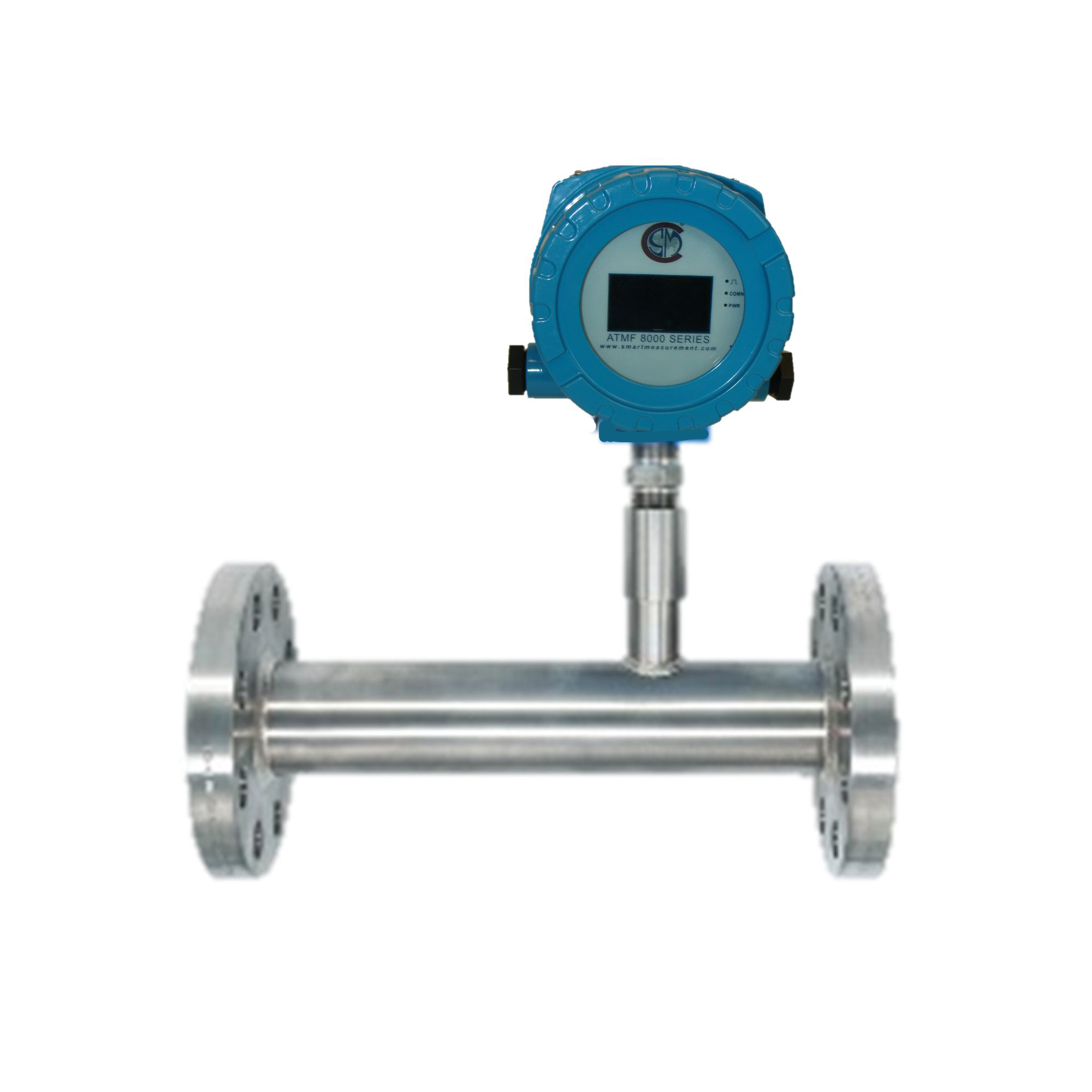Smart Measurement Thermal Mass Flow Meters
Thermal mass flow meters directly measure compressed gas mass flow without the need to compensate for dynamic changes in pressure and temperature, have no moving parts and are therefore maintenance free, create virtually no pressure drop, and have turndowns exceeding 100:1 while maintaining superior accuracies and low-flow performance versus other flow technologies.
Thermal flow meters Overview
The challenges of measuring gases are much greater than measuring any other fluid because a small change in pressure and/or temperature can affect measurement accuracies greatly. These challenges are presented on https://smartmeasurement.com/gas-flow-meters/. Thermal mass flowmeters alleviate the majority of these challenges better than any other gas flow measurement technology. With the exception of Coriolis gas mass flowmeters, all other gas flowmeters are volumetric flow measurement devices. However, Coriolis gas measurement has proven to be more effective in high pressure applications while lower pressure gas poses challenges.
Traditionally, gas flow measurement was done with volumetric gas flow meters. This type of meter non-mass meter requires external temperature & pressure sensors and a flow computer to correct for these changes in pressure and temperature. Compensating for dynamic changes in pressure and temperature is expensive, more cumbersome to install, and inaccurate, as the inaccuracies of the volumetric flow meter, pressure. and temperature sensors all factor into the overall accuracy of the system.
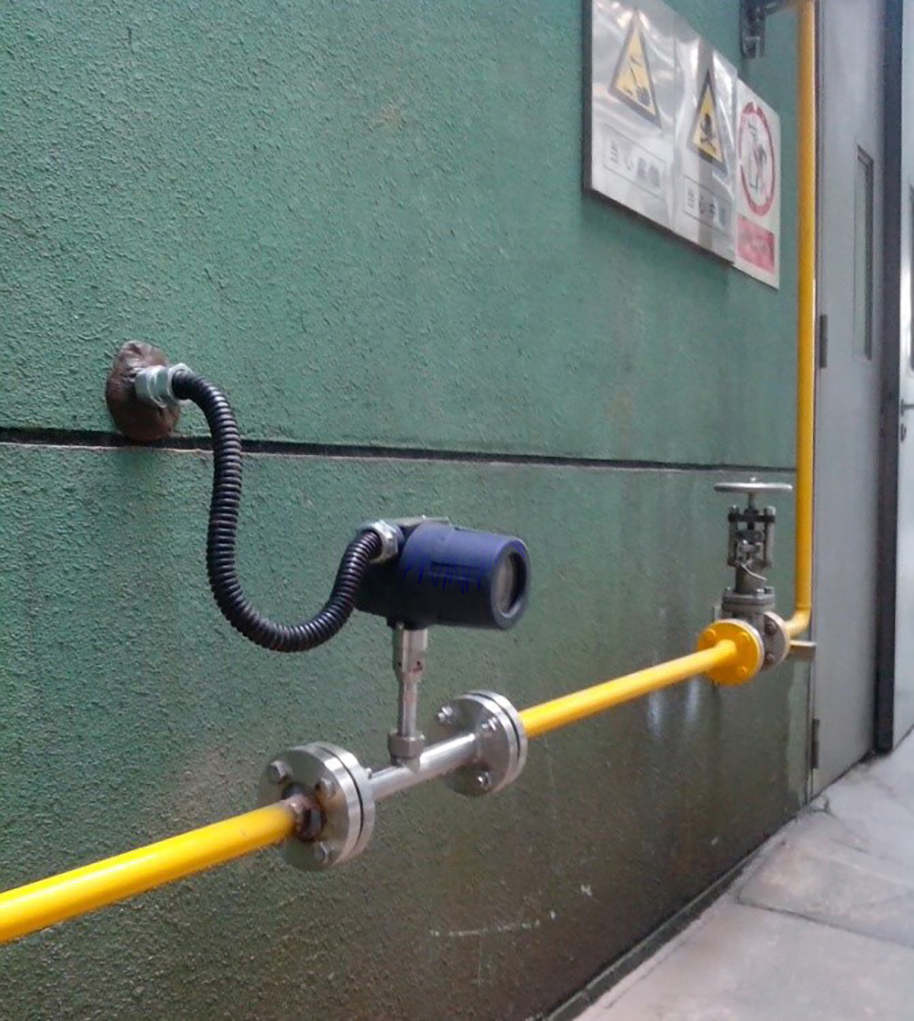
Key Applications
The ATMF series of Thermal Mass flowmeters from SmartMeasurement have been successfully installed in a wide variety of industries and applications including:
- refinery gases
- bio or waste gas in wastewater plants
- landfill gases
- pollution gases in stacks and flares
- combustion air and natural gases in boiler controls
- compressor stations
- gas storage tanks
- carbon dioxide gases in food and beverage applications
- steel plants
- HVAC
Why choose a Thermal Mass flow meter
There are many process gas flow measurements, such as biogas or waste gas, that require measurement of very low flow rates. This can create challenges for older, traditional flow measurement technologies such as turbines, differential pressure, vortex, ultrasonic, or positive displacement, that only measure volumetric flow and require additional instruments to determine mass flow. Thermal mass flow meters measure mass directly without the need to take into account of changes of process temperature, pressure and density as volumetric flow meters do. They have excellent low-flow sensitivity, virtually no pressure drop, and are easy to install. Measuring gas mass flow without other instruments to compensate for dynamic process changes makes SmartMeasurement’ s ATMF series of gas mass flowmeters the instrument of choice for these difficult applications.
The ATMF series of thermal mass flowmeters feature accuracies of ±0.5% of Full Scale ±1% of reading, a turndown ratio of greater than 100:1, the ability to measure in small pipe sizes ranging from of ¼” (6mm) to large ducts of unlimited sizes with our insertion style meters. Flow velocities of 4-40,000 fpm (0.02-200 mps) at temperatures of 932oF (500oC) and operating pressures of up to 1000 psig (69 barg) are possible for this technology. The ATMF series are most popular in measuring air, natural gas, and biogas, as well as any industrial gas measurement applications. For applications with limited straight runs http://smartmeasurement.com/wp-content/uploads/2021/02/Straight-Run-Requirements-of-Various-Flow-Technologies.pdf flow conditioners of various sizes are offered.
Special Cases
The case for Insertion thermal mass meters the ATMFIS
SmartMeasurementTM offers a wide range of insertion thermal mass meters that can be used in pipes of 2” (50mm) or greater. This makes installation of thermal mass meters less expensive than inline meters because they are installed on the top of the pipe with only one fitting. Moreover, insertion meters can be “hot tapped” with various ball valve retractors without shutting down the process in for maintenance and/or evaluation.
Featured Products
ATMFIS-SP
-
Ex-proof
- Insertion greater than 2" (50mm)
- Hazardous gases
- -23-492°F ( -5-+223℃)
- 1% of reading plus 0.5% FS
- 1500PSI (100 bar)
- 316SS and HASTELLOY
- 4-20mA, pulse, MODBUS
- Ball valve, NPT, flanges (ANSI,DN,JIS)
- Greater than 100:1 turn down mass flow (0.02-200 mps or 4-40,000 fps) of any gas
- Oil & gas or any Ex-proof applications, as well as where ongoing meter diagnostics are necessary
ATMFIS-NH
-
General purpose
- Insertion greater than 2" (50mm)
- Non-hazardous gases
- -23-492°F ( -5-+223℃)
- 1% of reading plus 0.5% FS
- 1500PSI (100 bar)
- 316SS and HASTELLOY
- 4-20mA, pulse, MODBUS
- Ball valve, NPT, flanges (ANSI,DN,JIS)
- Greater than 100:1 turn down mass flow (0.02-200 mps or 4-40,000 fps) of any gas
- General Industry
ATMFIL-SP
-
Ex-proof
-
Inline ¼-4" (6-100mm)
- Hazardous gases
- -23-300°F ( -5-+150℃)
- 1% of reading plus 0.5% FS
- 1500PSI (100 bar)
- 316SS and HASTELLOY
- 4-20mA, pulse, MODBUS
-
NPT, flanges (ANSI,DN,JIS)
- Greater than 100:1 turn down mass flow (0.02-200 mps or 4-40,000 fps) of any gas
- Oil & gas or any Ex-proof applications, as well as where ongoing meter diagnostics are necessary
ATMFIL-NH
-
General purpose
-
1% of reading plus 0.5% FS
- High purity gases
- -23-300°F ( -5-+150℃)
- 1% of reading plus 0.5% FS
- 1500PSI (100 bar)
- 316SS and HASTELLOY
- 4-20mA, pulse, MODBUS
-
NPT, flanges (ANSI,DN,JIS)
- Greater than 100:1 turn down mass flow (0.02-200 mps or 4-40,000 fps) of any gas
- General industry
Application and Installation Techniques
Proper installation is key to achieving optimum performance and maximum service life for a thermal mass flowmeter. Key considerations to observe when installing the meter are as follows:
- Install the meter in the location on site having the maximum number of straight runs possible. For insertion style meters, consider making use of flow straighteners/conditioners if a minimum of 25 Φ of upstream straight run is not available. For inline meters allow a minimum of 5 Φ of straight run upstream and 5 Φ downstream of the meter.
- Certain types of disturbances upstream or downstream of the meter will cause more turbulence than others. For example, two 90° elbows rotated into different planes, or a blower, or a 4:1 reducer bushing are known to create extreme amounts of turbulence. In these situations, allow more straight pipe lengths per manufacturer recommendations or make use of a flow straightener upstream of the meter in between the meter and the disturbance.
- Contamination such as dirt or oil, as well as condensate gathering on the thermal meter’s RTD sensor tips can hinder the meter’s performance and lead to inaccurate readings. For applications that are known to be either dirty or to contain excessive moisture, make use of a hot tap valve for insertion style meters, or if an inline style meter is being used, install a bypass around the meter to allow for the instrument to be removed from the process for cleaning.
- SmartMeasurement’s ATMF Series thermal meters have a unique feature that allows users to view the raw milliwatt signal coming from it’s RTD sensor and compare it to the displayed flow rate readings. When the raw sensor milliwatt versus displayed flow readings relationship starts to diverge from the original report from the factory, this will indicate that the RTD sensor needs to be cleaned. Making use of this feature can help users identify issues with sensor fouling before they become problematic.
Theories of Operation
Both insertion and/or inline style thermal mass flow meters have a sensor probe that contains sensors that extend into the gas flow. The sensors are resistance temperature detectors (RTDs), consisting of durable reference-grade platinum windings protected in a 316 stainless steel sheath. One RTD is called the active RTD, or flow sensor, while the other is the temperature sensor. As gas flows past the heated sensor, gas molecules carry heat away from the heated sensor, which is measured by the second RTD temperature sensor. The temperature difference between the two sensors is proportional to the mass flow. The RTDs output is proportional to temperature, hence the changes in the resistance of the two RTDs correlate to the mass flow. Thermal mass meters work best in dry gas applications. Wet gases can also be monitored but must be factory adjusted. and it is important that users let manufactures know if the gas is wet. However, moisture condensation on either of the sensors will cause errors and it is advised that the sensors be periodically cleaned under these conditions.
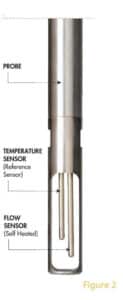
The most popular thermal mass principal is called constant overheat, or variable current, which is the method used by SmartMeasurementTM. One RTD called the active RTD, or flow sensor, has a circuit heating it while a second detector acts as the reference-sensor to measure the gas temperature. (See illustration below).
As gas flows past the heated sensor, gas molecules carry heat away from the heated sensor. The circuitry maintains a constant overheat between the flow and reference sensors. A change in the mass (molecular) flow rate changes the amount of cooling, resulting in a temperature change, disrupting the circuit balance. Almost instantly, the circuit reestablishes the lost energy by varying the input current to the flow-sensor to maintain the correct overheat temperature. The amount electrical power used to maintain this overheat determines the mass flow signal.
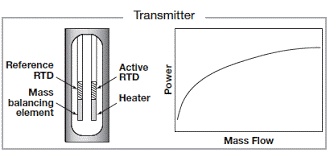
Some manufacturers use the constant current technique. It also uses two RTDs, sheathed in thermowells which are slightly separated. Heat is applied internally to one RTD relative to the other, creating a differential temperature between the two. The heated sensor (flow sensor) is heated at a certain fixed temperature. As with variable current techniques, the other RTD (the temperature RTD) measures the changes in process temperature This differential temperature is greatest at no flow conditions and decreases as flow increases, cooling the heated RTD. This differential is electronically converted into an electrical signal which can be linearized across a large turndown to provide a wide range air/gas mass flow meter. As flow goes over the sensors, electronic circuitry measures the changes in temperature which transforms into mass flow rate.
.